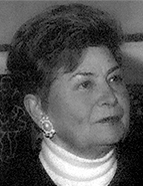

The Rafael Bordalo Pinheiro Museum was another museum space that Irisalva Moita brought to life: “When I arrived there [in 1971], I had to do all the groundwork, starting with the inventory (...) because the inventory is the basis for more reliable knowledge. It makes it easier and safer to identify the pieces in a collection” (Interview, p. 142). The museum and museographic refurbishment resulted in the remarkable exhibition As Faianças de Rafael Bordalo Pinheiro (The Faience of Rafael Bordalo Pinheiro) at the Galveias Palace in 1985. This was followed by another, already in the museum named after him, on Fontes Pereira de Melo in the caricatures of Rafael Bordalo Pinheiro (1988). He chose this venue for the exhibition Hospital Real de Todos-os-Santos. 500 anos (1993), a theme that was particularly dear to him, accompanied by the publication of his book V Centenário do Hospital Real de Todos-os-Santos by CTT. These achievements were accompanied by communications. In 1993, he presented Rosa Araújo in the caricatures of Rafael Bordalo Pinheiro, at the Gabinete de Estudos Olisiponenses, and Rafael Bordalo Pinheiro and the Grupo do Leão, at the Palácio Galveias.
Irisalva Moita published 196 works, including articles in journals, communications, reports and exhibition catalogues, according to the aforementioned curriculum vitae prepared by José Meco. However, among the vast body of work associated with her name, O Livro de Lisboa (The Book of Lisbon) stands out. She coordinated this work and wrote three studies for it, which was part of the major event “Lisbon 94 European Capital of Culture” in 1994. For this work, which is a reference for the history of the city, she received an award from the City Council in 1995. Irisalva Moita’s life and work reveal a personality that combines the facets of historian, archaeologist and museologist. However, given the central role that Lisbon has acquired and combined in all these fields, considering her an olisipógrafa (a writer specialising in Lisbon) perfectly sums up her true profile. Reflecting on the various activities in which she was involved, she herself summed it up as follows: “I couldn’t seek the life I wanted, but I liked all the lives I had” (Interview, p. 143). She died on 13 June 2009, the feast day of Saint Anthony, one of the city’s patron saints, to whose museum she had devoted so much of her life, without ever managing to expand it as she had wished. She was a Corresponding Member of the National Academy of Fine Arts ( ) (1978); Vice-President of the Friends of Lisbon Group (1980) and Member of the Association of Portuguese Archaeologists (1997).
This work is financed by national funds through FCT - Foundation for Science and Technology, I.P, in the scope of the projects UIDB/04311/2020 and UIDP/04311/2020.
